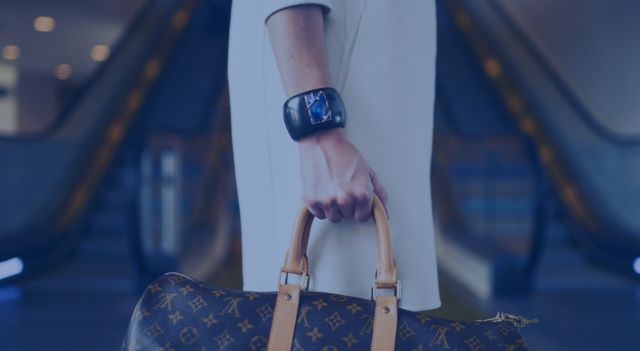Luxury shares rallied on Wednesday after LVMH (EU:MC) delivered stronger-than-expected third-quarter results, suggesting a stabilization in global luxury demand and sparking a sector-wide rebound.
LVMH stock jumped 12% to above €599 in early trading. Shares of rivals Hermès (EU:RMS), Kering (EU:KER), Richemont (BIT:1CFR), Burberry (LSE:BRBY) and Moncler (BIT:MONC) also climbed between 5% and 8%, underscoring renewed confidence in the sector.
The group reported a 1% increase in quarterly revenue, its first positive growth of the year, driven largely by stronger Chinese demand. The update comes as a welcome relief for the luxury industry, which has been grappling with a slowdown in consumer spending after several years of record expansion.
“We anticipate the luxury sector to also be strong today, with positive commentary on most nationalities boding well for a generally better luxury reporting season, especially for companies/brands that went into this more favourable backdrop with strong brand momentum,” analysts at JPMorgan Chase & Co. wrote in a research note.
LVMH noted that trends in Asia excluding Japan — a market heavily influenced by Chinese buyers — showed a “noticeable” improvement through the first nine months of 2025. “Mainland China turned positive in Q3,” Chief Financial Officer Cecile Cabanis told analysts on a call.
Cabanis warned, however, that “headwinds remain in the fourth quarter,” pointing to currency effects and ongoing macroeconomic uncertainty. She stressed that the group remains confident in its creative repositioning strategy and that sustained financial progress would “take time” with “gradual sequential improvement.”
Sales in the fashion and leather goods division — home to Louis Vuitton and Dior and responsible for most of LVMH’s profit — declined 2% year over year. However, this was a clear improvement from the 9% slump in the second quarter, suggesting that the company’s core business may be turning a corner.
The luxury sector has been in a downturn since the post-pandemic boom faded. Years of aggressive price hikes at top brands such as Louis Vuitton and Dior boosted margins but also reduced demand, particularly among more price-sensitive consumers.
The industry is also facing broader economic challenges, including tariffs imposed by U.S. President Donald Trump, ongoing stress in China’s property sector, and higher jewelry production costs linked to rising gold and silver prices.
This content is for informational purposes only and does not constitute financial, investment, or other professional advice. It should not be considered a recommendation to buy or sell any securities or financial instruments. All investments involve risk, including the potential loss of principal. Past performance is not indicative of future results. You should conduct your own research and consult with a qualified financial advisor before making any investment decisions.
Some portions of this content may have been generated or assisted by artificial intelligence (AI) tools and been reviewed for accuracy and quality by our editorial team.
